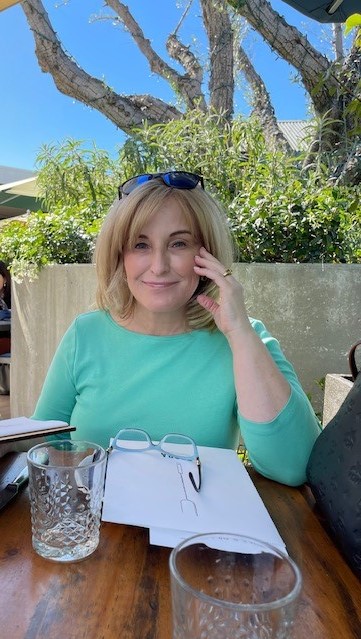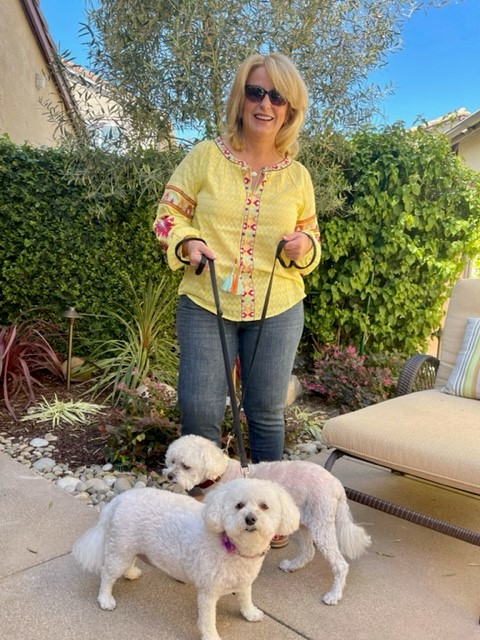 Paula Bafan suffered from leg and back pain for years and had seen several different doctors. At first, she tried a variety of conservative treatments to manage the pain including chiropractic care, physical therapy, massage, acupuncture and steroid injections. The steroid injections initially provided relief, but that was short-lived.
Paula Bafan suffered from leg and back pain for years and had seen several different doctors. At first, she tried a variety of conservative treatments to manage the pain including chiropractic care, physical therapy, massage, acupuncture and steroid injections. The steroid injections initially provided relief, but that was short-lived.
Paula could no longer live with the pain and with all the new changes in her life, she was looking for the ability to play with her 1-year-old granddaughter and to enjoy time with her husband once he retires. She didn’t want to miss out on spending quality time with her loved ones due to back pain or limited activity.
“After three-to-four years of doing everything considered ‘conservative management,’ I knew it was time for a surgical remedy when my walk started to include a limp,” Paula stated. “Due to the pain, I was no longer getting restful sleep. I felt drained even when I was awake.”
In October 2021, Paula saw Payam Farjoodi, M.D., orthopedic surgeon at the MemorialCare Spine Health Center at Orange Coast Medical Center to see what her options might be to relieve or solve her back pain problems.
“She had a condition that’s actually quite common,” said Dr. Farjoodi. “It’s called lumbar degenerative disc disease and basically what that means is the disc or the normal cushion that sits between the bones of the spine wore out significantly. When that disc wears out, it causes some increased pain in the back itself by causing the bones to almost grind on each other. But it also causes some narrowing of the opening where the nerves exit the spinal canal and go into the leg, causing this sciatic-type pain for a lot of patients.”
After Paula shared her experiences and the various treatments she tried, she and Dr. Farjoodi realized that the best option would be surgery to correct the disc degeneration.
Inclusive Team Environment
Paula attended a pre-surgery preparation class with Wincate “Winnie” Elias, Ortho-Spine/Bariatric Navigator at the Spine Health Center, to learn more about what to expect pre-, during, and post-surgery.
Paula learned what to expect in the few days leading up to the surgery, what she would need to do at home to prepare for the surgery, and what to pack in her bag to bring to the hospital. The class also covered expectations on the day of surgery, the recovery process, and going home.
“Everything you should know, that information was shared, so that was super helpful,” Paula said, adding that she really appreciated the cohesiveness of the spine care team, which included Dr. Farjoodi, and physician’s assistant Zachary Stone and Winnie Elias.
“They were amazing because they were so patient,” said Paula. “I didn’t feel like what they were saying was above my head. I understood what they were explaining to me about why things were being done the way they were being done, how it was going to go, and more. They were so patient with me, it felt like you were part of a team.”
On Dec. 20, 2021, Paula had surgery. Dr. Farjoodi opened the narrowed disc, removed what remained of the disc, broke up the bone spurs, and put in a spacer – a synthetic hollow ring that contains some bone graft and stem cells in the center – which enabled the bones to fuse with one another. Hardware was then placed within the vertebra to stabilize Paula’s spine. Essentially opening up space for the nerves that are going into the legs.
Positive Post-Surgery Outlook
“Once I had the surgery and during my stay in the hospital, there were so many different people with different functional areas of expertise,” Paula recalled. “You had pain management, physical therapy, occupational therapy, the nursing team, and each piece worked together. It just was very easy and very comforting.”
Paula received physical and occupational therapy, stayed in the hospital overnight, and was doing so well that she was able to go home the next day after surgery.
 At home, she began receiving gentle, at-home physical therapy with a MemoricalCare physical therapist who made sure that Paula was in a safe space where she wouldn’t trip and fall. He also inspected the shower and got her moving so she would not become stiff.
At home, she began receiving gentle, at-home physical therapy with a MemoricalCare physical therapist who made sure that Paula was in a safe space where she wouldn’t trip and fall. He also inspected the shower and got her moving so she would not become stiff.
After six weeks of at-home physical therapy, Paula began outpatient physical therapy.
“Over the course of the first 6 to 12 weeks, which she’s still in now, there’s some recuperation in terms of the body building up muscle and stabilizing the spine, getting used to the area of the fusion,” Dr. Farjoodi said. “But her restrictions are gone. She’s walking without difficulty, so her prognosis is excellent. I think she’s going to do very well and get back to very close to normal if not better than that once she’s recovered.”
Paula said she’s feeling stronger each day. Before the surgery, it was difficult for her to walk her two small dogs. Now, as she continues to heal, Paula can walk 45 minutes to an hour without discomfort as well as walk her dogs.
“I’m so thankful for the team’s dedication,” Paula said.